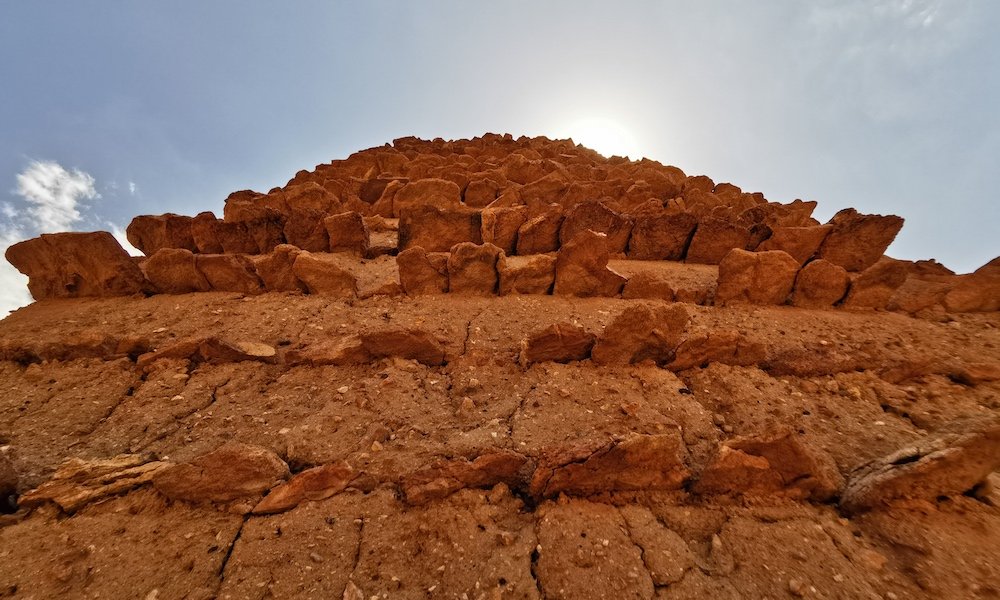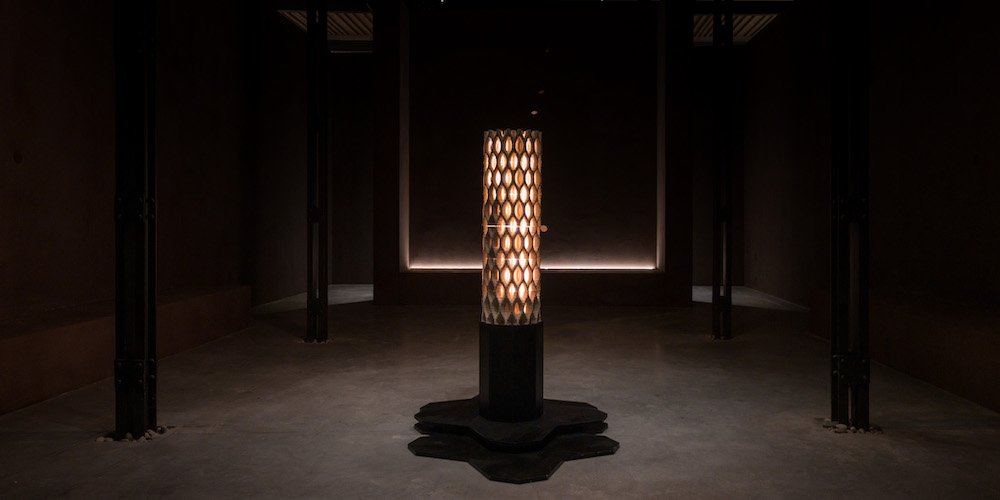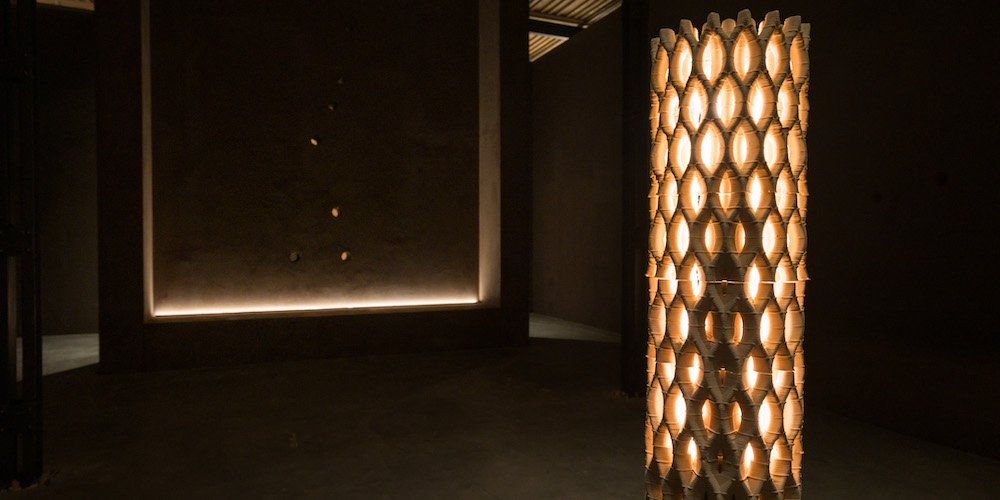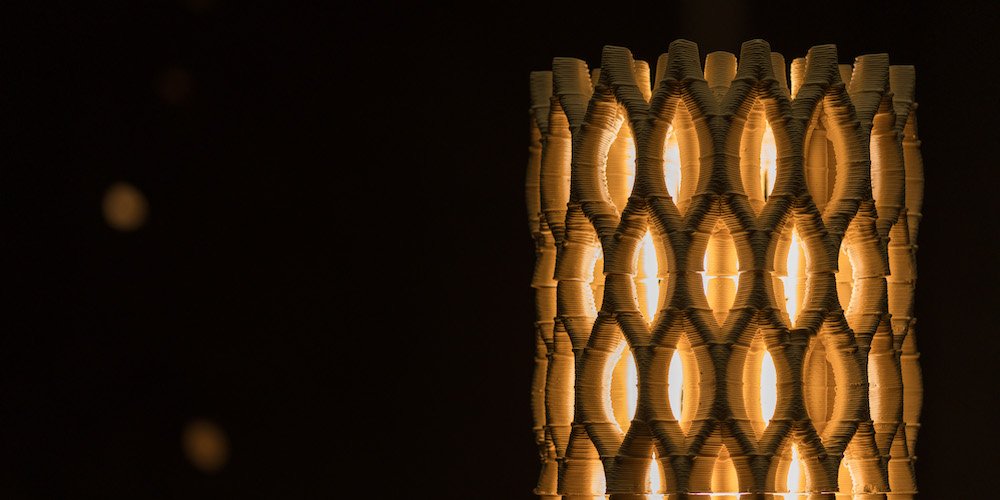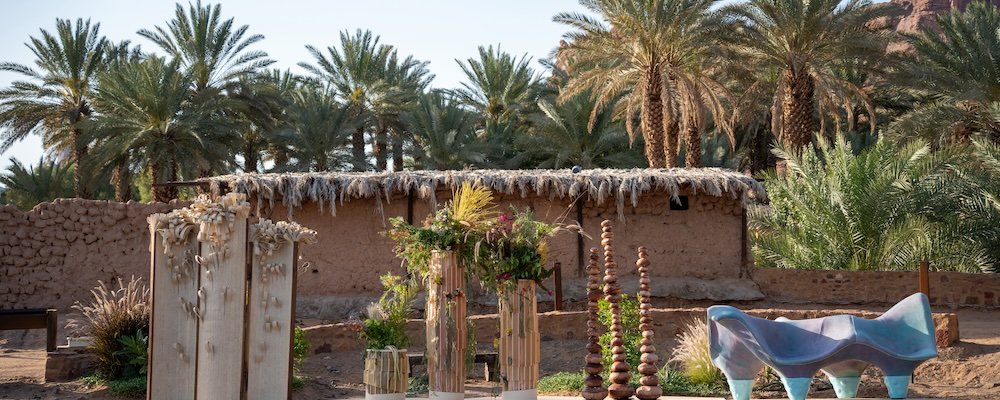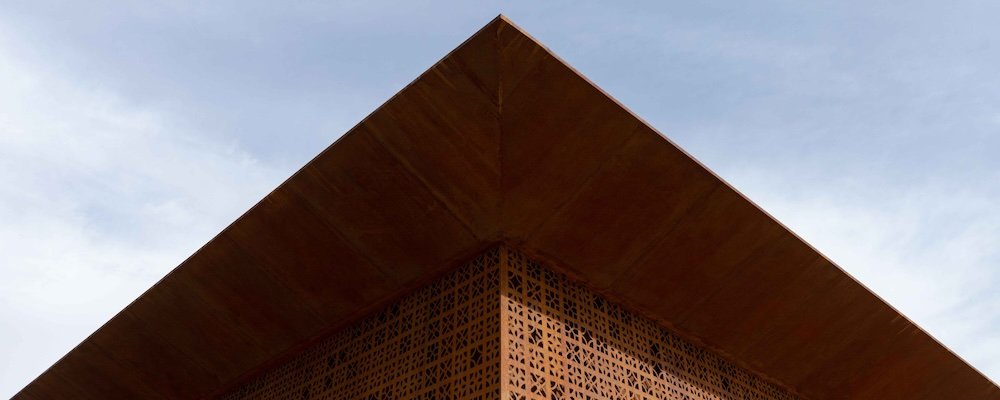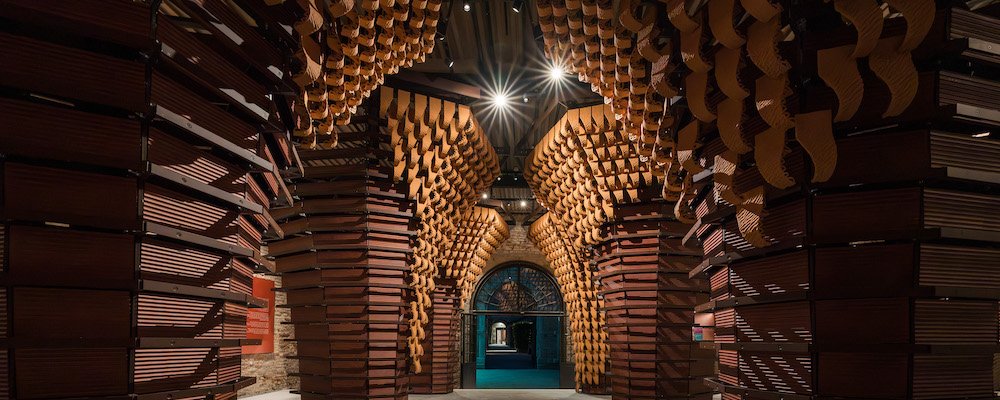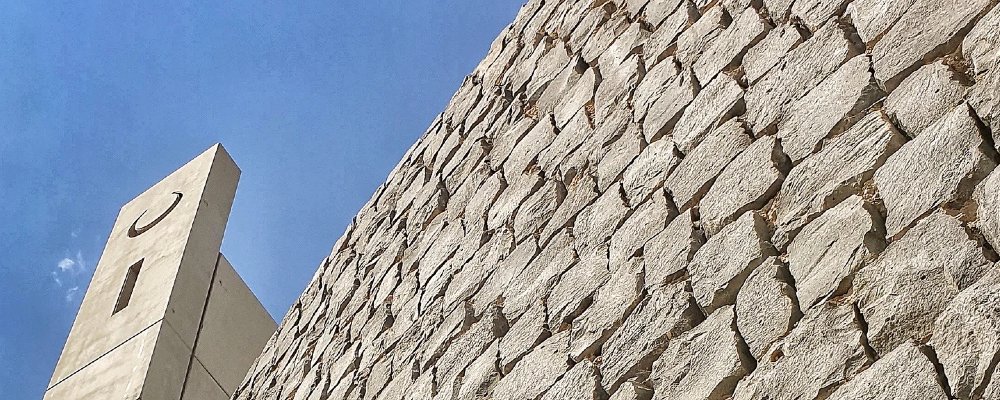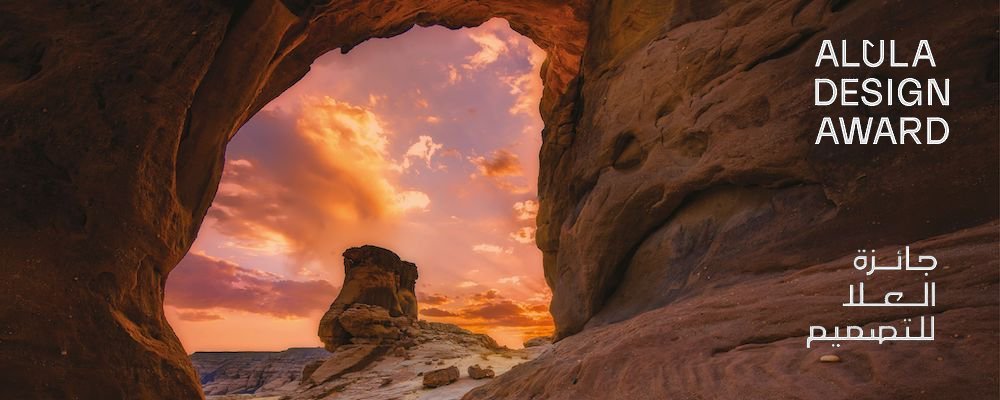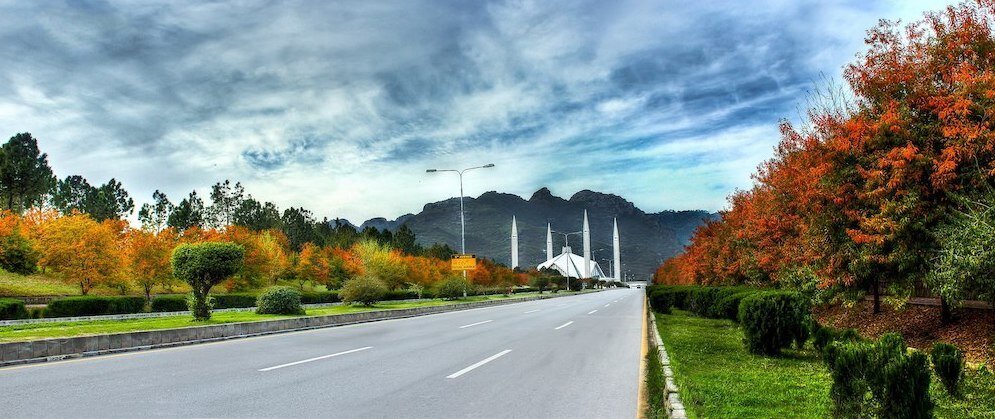IRTH إرث - (Im)Material Legacy
The National Pavilion of Saudi Arabia presents its third participation the 18th International Architecture Exhibition – La Biennale di Venezia with the exhibition IRTH إرث , curated by Basma and Noura Bouzo and designed by the architect AlBara Saimaldahar.
The Saudi Pavilion examines the symbiotic relationship between material and immaterial. The cohesion of both informs perception and generates the interpretation and response to the situatedness of a nation’s inhabitants.
Materials used to shape built in environments tell us a lot about the inhabitants of a country or geographical area. Their tangible and intangible properties defines the character of spaces and objects. Materials are embedded with narratives and hold valuable lessons: they are milestones building bridges between future-proofed legacies and new practices. A dynamic legacy that everybody both receives and creates, which projects the nostalgia of traditional knowledge towards innovation, creating a constantly evolving line of continuity.
IRTH إرث [legacy in Arabic] provides an interactive exploration of this line linking the past and future starting with one of the historically significant and primary material used in Saudi architecture: earth. As both a structural element and architectural cladding material, earth is here used and evoked in terms of its texture and colour – spanning the entire range of colours of Saudi Arabia’s earth tones from its most internal desert regions to the Red Sea coast.
The design of the Pavilion is based on a multi-layered approach so visitors can experience the project from different perspectives. The structure is divided into several sections, reflects on the method and use of vernacular components in conjunction with innovative technologies. The content of the exhibition provides an overview of the material’s present and future within the context of Saudi architecture.
The layout – designed by architect AlBara Saimaldahar – combines the notions of nostalgia, legacy, and on-going adaptation. The layout looks to the future through the lens of the past: it enhances the intrinsic essence of Saudi craftsmanship through elaborate artefacts, takes traditional patterns and motifs from Al-Balad, the old city of Jeddah, and transforms them into fluid forms. At the heart of the project is an experiential component: a simple, immersive room that stimulates the senses of visitors, triggering individual reactions - memories, emotions – in an independent and uninfluenced manner.
The journey through the Pavilion's three main structures begins by passing beneath six arches as authentic gateways. With their imposing eight-sided metal structures clad internally with wooden panels and externally with 3D-printed clay tiles – featuring an undulating pattern reminiscent of desert dunes – the portals convey an idea of both grandeur and lightness, evoking on the one hand monumental works of architecture carved in stone and in caves, mighty, seemingly indestructible and enduring across time, and on the other hand the transience of materials, as unstable as the sand of the Rub' al-Khali desert, the Empty Quarter, as the outer covering gradually fades until it disappears.
Experimentation emerges in penumbra in the middle of the Pavilion in an olfactory setting: a large empty rectangular room is imbued with a fragrance created especially for the exhibition out of lavender, frankincense, and myrrh, with olfactory notes resonating with Arab culture in its most homely form.
An immersive sensory hub, this dematerialised environment offers a glimpse of the future through the lens of tradition: an existential experience allowing visitors to experience something exceptional, sensing a 'moment' in time and triggering a memory of the Pavilion that will be different for each individual person.
The only material element inside the hall is a sculpture, a 3D printed clay column illuminated by interior lights that project light patterns onto the floor, walls, and ceiling of the Pavilion. When the Architecture Biennale is over, this work will be transported to the bottom of the Red Sea, acting as an artificial stone to stimulate the growth of a marine ecosystem. Gradually, as more columns are printed, this 'first stone' will be joined by new elements: a gradual and continuous pattern of growth that will transform a single object artificially placed in a natural setting into an expanse of vertical lines, a labyrinth from which corals and other life forms will come forth. The contrast between the pure geometric form of the columns and the irregular expansion of life within them will visualise the relationship between nature and artifice: a human artifact is reclaimed and incorporated by nature in a dynamic balance that is both fragile and enduring.
The layout concludes by passing through two more portals: here the visitor is invited to get involved in their transformation, adding new tiles (from the legacy of earth/clay tiles) to this octahedral structure through an interplay of progressive change, day after day.
The experiments and explorations on display at the National Pavilion of Saudi Arabia bring together the interdisciplinary perspectives of architects and designers in a project that invites the public to take part in an exploratory journey that will help define a legacy for future generations.
The common thread running between the different approaches in play and the philosophies applied to architecture that the Pavilion brings to the forefront the concept of collaborative practice as the basis of the laboratory of the future: a collective effort that finds common ground in a desire to improve the human condition and respond to the challenges that lie ahead.
Commissioned by the Architecture and Design Commission, under the umbrella of the Ministry of Culture, the Saudi Pavilion is on display at the Arsenale – Sale d’Armi during the 18th Architecture Biennale from 20 May to 26 November 2023.
The curatorial team is Noura & Basma Bouzo (curators), AlBara Saimaldhar (architect), Jou Palabate and myself (assistant curator).

